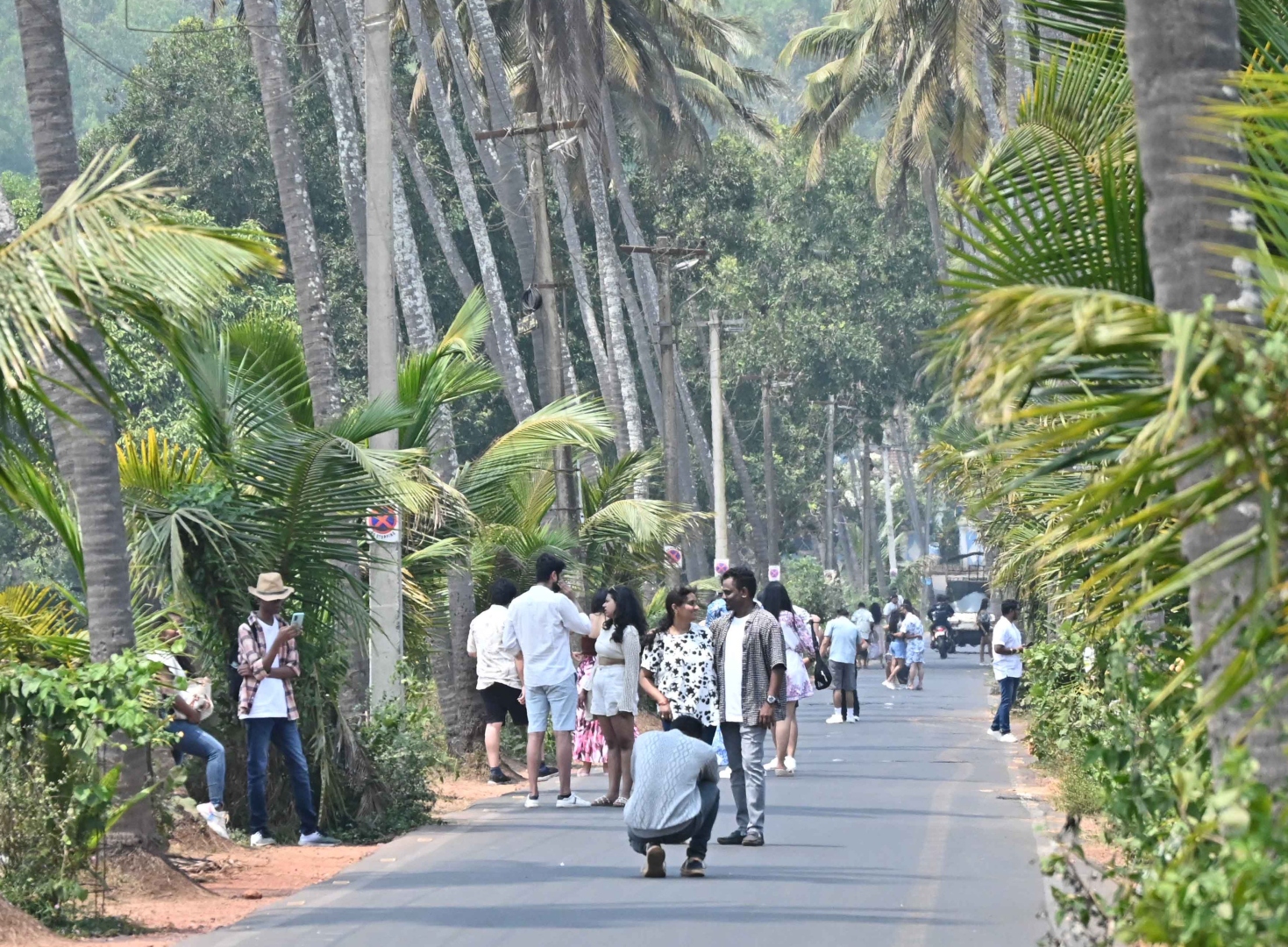
A horde of tourists on the iconic road in Parra.
Photo Credits: Narayan Pissurlenkar
MAPUSA
The Parra road, with its iconic palm trees lined symmetrically on either side, has become a symbol of North Goa’s rustic charm and scenic allure.
Once a peaceful stretch used mostly by local residents, this narrow, picturesque road catapulted to fame after its feature in the Bollywood film ‘Dear Zindagi’, which captured its serene landscape. The movie not only boosted its popularity but also transformed it into a “must-visit” spot on every tourist’s itinerary, giving it near-celebrity status among Instagram and Facebook users keen on capturing its beauty.
However, with fame came challenges.
The surge in tourists, often caught up in capturing that perfect snapshot, soon led to chaotic scenes on the Parra road. Visitors walked, posed and even danced in the middle of the narrow stretch, oblivious to the steady stream of vehicles and locals trying to get to their destinations.
For residents, navigating the now-famous road became a daily ordeal, with traffic jams, illegal parking and discarded trash becoming constant headaches.
In 2019, in an attempt to address these issues, the Parra panchayat decided to levy a “Swacchta Tax” on tourists engaging in photography and videography along the road. This measure was designed to deter disruptive behaviour and raise funds to maintain cleanliness.
However, the move sparked widespread criticism on social media, with many visitors arguing that such fees would discourage tourism in Goa. In response to the backlash, the panchayat quickly suspended the tax.
Yet, the problems persisted. Tourists continued to flock to Parra road, and the issues of litter, noise and traffic disruptions remained unresolved.
Determined to restore balance, the panchayat reintroduced the tax in 2022, this time as an “entertainment tax”, specifically for those shooting videos or short films along the road. This new approach, while still controversial, aimed to distinguish casual photography from more involved video productions.
Beyond the tax, the panchayat implemented other measures to help ease the local strain. Parking areas were designated in nearby fields to reduce roadside parking, and a sustainable community park was introduced as an additional attraction.
This park, designed for both locals and tourists, provides not only scenic seating areas but also amenities like public toilets and changing rooms – a much-needed facility for the high influx of visitors.
Locals acknowledge that the new measures have brought some improvement. As one resident puts it, “Tourists still come, and it can still get chaotic at times, but it’s not as bad as before.”
However, traffic congestion remains a lingering issue, a sign that Parra road’s charm continues to draw tourists in droves.
As Parra road grows in popularity, balancing its touristic allure with the needs of the local community remains a delicate act. For locals, the road's fame is a reminder that with tourism’s benefits often come a set of unique challenges – ones that need ongoing solutions as both the road and its visitors become integral parts of North Goa’s story.